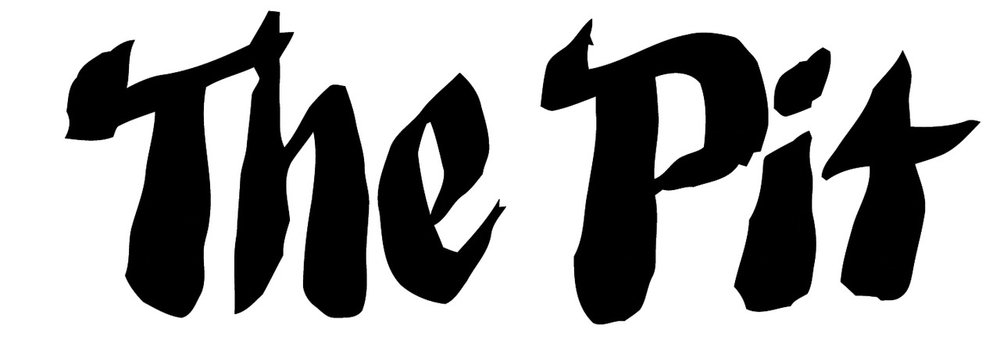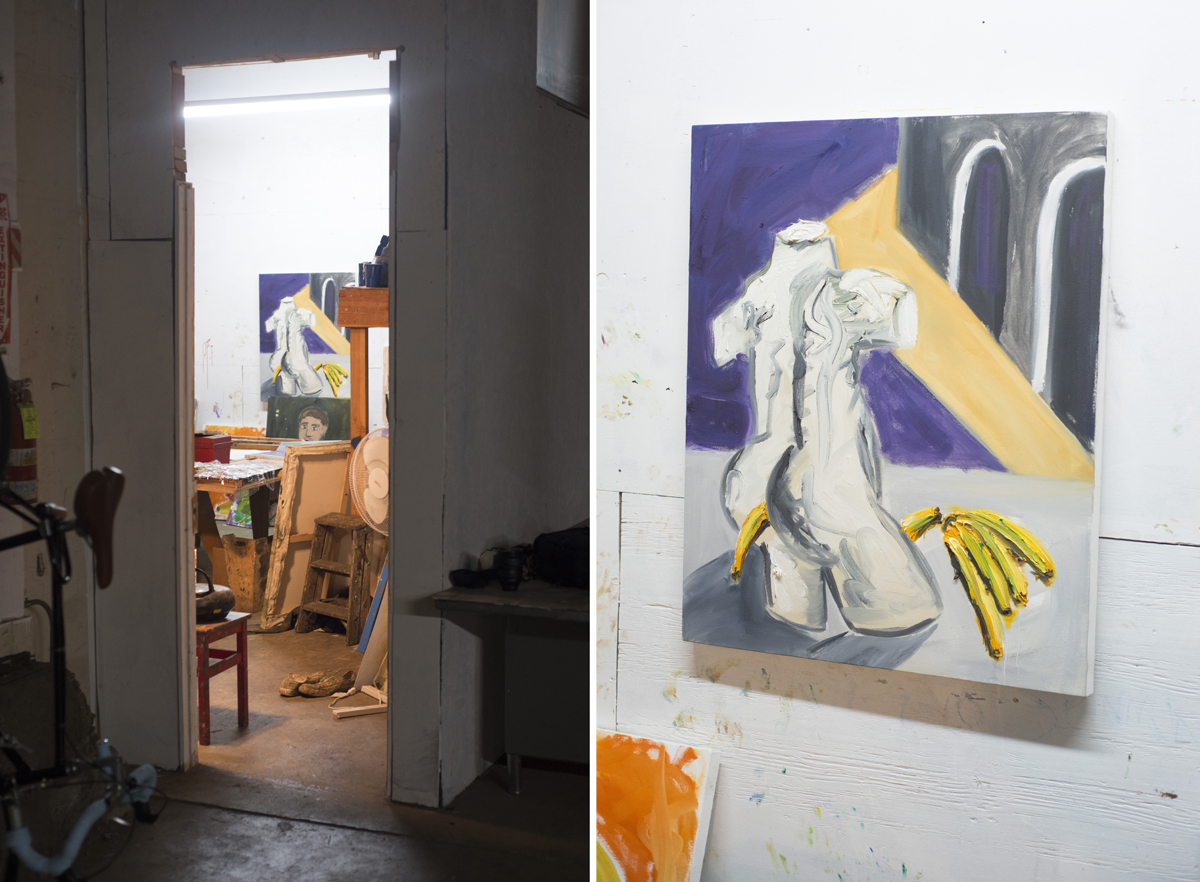I can’t stop thinking about a new painting by Keith Boadwee and Club Paint. A smiling green frog squats on a lily pad, a slightly lighter shade of green than its skin. Another frog mounts this frog, all smiles. The pair takes up almost the whole canvas against a quickly-painted background of purples and reds.
It’s a pleasing and delightful painting to regard. Formally, the image has a complex relationship to the frame — the bottom frog’s face is clipped by the right border of the canvas — and a richly contrasting palette of greens, yellow and purple. But ultimately, what makes this painting irresistible is that it shows a frog fisting another frog.
I’ve seen a lot of paintings in my life, but until visiting Keith Boadwee’s studio inside a huge loft in East Oakland, I had never seen a painting of frogs having great sex.
The disarming pleasure of seeing such a sight for the first time underscores Boadwee’s long negotiation with the canon of art historical images, especially painted images, that saturate his work. His approach is his own blend of homage and irreverence — nothing and no one is off limits.
In his career, Boadwee has built a powerful body of work, principally through candid or staged photographs, drawings and paintings. Throughout, Boadwee has consistently engaged in a weird intervention into art history. Painters and paintings are frequently the subject of his work, reframed in witty, erotic and abject terms.
In a solo exhibition at New York’s Shoot the Lobster earlier this year, he showed a new series of paintings titled Poppies, an obsessive sequence of bright red flowers. Poppies is an extremely approachable, pretty set of paintings. Yet for those familiar with Boadwee’s practice (painting his own body, and giving himself paint enemas has long been part of Boadwee’s repertoire), their sweetness smells a little fishy. Succumb to their aroma if you want, but there is no telling where these flowers have been.
Alongside Boadwee’s decades-long project of inquiry and play with the vocabulary of painting, in recent years he has produced an enormous body of work under the name Keith Boadwee and Club Paint. As the moniker suggests, these paintings are, in Boadwee’s words, collaborations.
As Boadwee explains, painters visit his studio space. Boadwee provides concepts, ideas, narratives and jokes. They work on the drawings and paintings together. Different painters have different competencies and skills. What’s remarkable about the organization of this collaboration is that despite the many different hands involved, the Club Paint paintings all resemble each other.
They are, as a rule, quick and outrageous. They are witty, highly aware of the traditions they’re appropriating and twisting. “Some people think these paintings are crude,” Boadwee says, “but I think they’re sophisticated.”
Many of Keith Boadwee and Club Paint’s works take other paintings as their subjects. After de Chirico translates Giorgio de Chirico’s The Uncertainty of the Poet, a painting with three essential elements — a sprawling, grim plaza with a train in the distance, a sculpted male torso in the Greek style and bananas — into their own irreverent language.
A common reading of de Chirico’s painting would observe the paratactical arrangement of the classical and the modern (the torso and the train), the timeless and the ephemeral (classical values of beauty and quickly spoiling fruit). De Chirico’s distorted perspective and weird shadows underscore an uncanny sense of the surreal.
In After de Chirico, the three elements undergo fundamental changes. Boadwee and Club Paint take de Chirico’s perspectival errors as a point of departure and make the torso more estranged, almost cartoonish. But the major intervention is a radically new relationship between the torso and the bananas.
I’m not thoroughly conversant with the literature around The Uncertainty of the Poet, but Keith Boadwee and Club Paint deconstruct a classically modernist take on the contradictions of contemporary life. Their painting is hilarious and weird, but it emphasizes how funny and weird De Chirico’s painting is too. Like, seriously, de Chirico, the bananas?
After DeChirico is an excellent illustration of what I am tempted to call Boadwee’s “method.” By excavating what is most strange about what is most familiar, Boadwee becomes an archaeologist of the perverse. The excellence of de Chirico’s painting is not overturned, as if Boadwee were developing a critique. Rather its meaning is wildly expanded in translation.
You’ll never look at it in the same way. You’ll never look at two frogs on a lily pad in the same way again.







